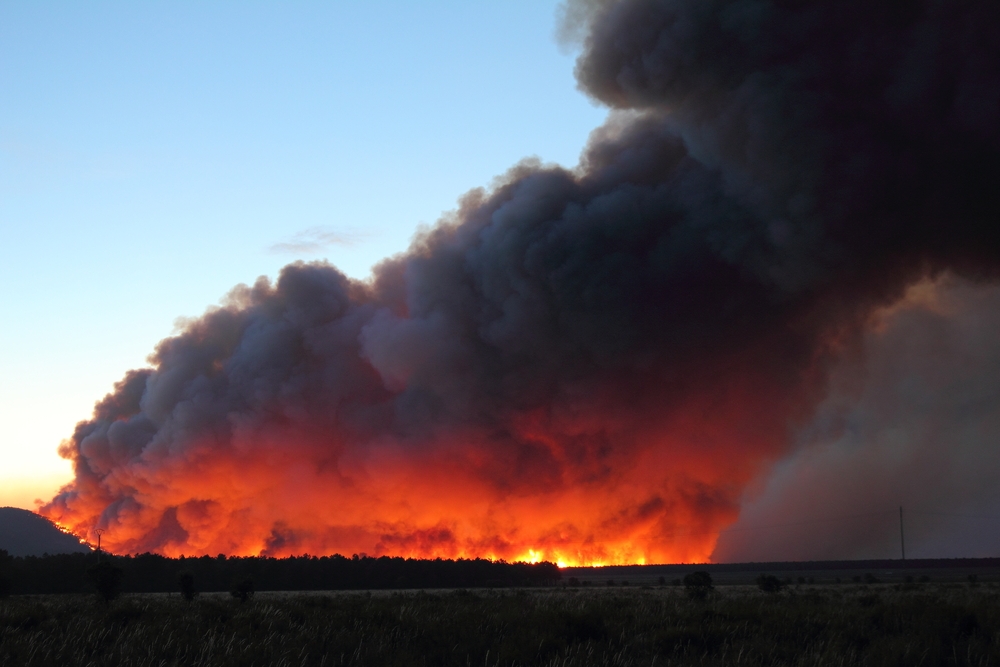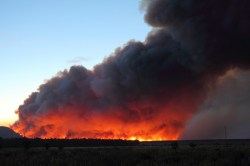Flying from Seattle to Boise, Idaho, on Sunday for the Pacific Northwest Climate Science Conference, the pilot pointed to a bit of climate change out the window.
“Over to your left you can see plumes from the fires,” he announced over the intercom. The sky was choked with smoke from Eastern Washington wildfires, as it has been for weeks.
In Boise it was clear and sunny. But the hotel shuttle driver noted this was the first time in days you could see the mountains above the town. Boise, too, has been gasping on the wildfires.
The smoke came up again in a Monday conference welcome by Boise Mayor David Bieter. It is heartening when the leader of the reddest state’s biggest city greets an auditorium full of climate scientists with an acknowledgement that “the work you do is of such importance to our community and policymakers in general … your work will help us understand what we might face in decades to come.”
Bieter said the climate issue has faded in recent times, but smoky skies seem to be bringing it back. “If we didn’t have climate change on our minds, events have forced us to think about it again.”
Indeed, this summer’s record heat waves, sweeping wildfires, and widespread drought have left visible imprints on the public mind. There is a sense that denialism is finally in retreat, and that this is a moment of climate opportunity.
But moments pass. Will we seize this one? Conference keynote speaker Roger Pulwarty’s comments couldn’t have been more on point. Director of NOAA’s Integrated Drought Information System, Pulwarty’s list of accomplishments in climate impacts and adaptation is guaranteed to make most of us feel like underachievers. Work with the World Bank. Reports for the Intergovernmental Panel on Climate Change, including a recent report on managing climate extremes. That resume gives Pulwarty a finely honed sense of the disconnect between information and action. His talk title put the question this way: “Climate, Change and Adaptation: Are we learning?”
“World Bank figures consistently show that $1 spent on hazard mitigation saves $3-$4 in the future,” Pulwarty said. “What do we do with that? Absolutely nothing … People ask for more information because they want to appear rational, not because they are necessarily going to do anything.”
The expectation that information will produce action is “idealized,” Pulwarty said: “The key question is — how do we learn over time? Perfect planning is a figment.” Pulwarty explained that the way it really works is that “proactive” planning results in action when crisis breaks out. When such a “focusing event” occurs, that opens a door to action. But only if a vital link is made — leadership by engaged individuals at all levels within public agencies, businesses, and other organizations. It all comes down to people positioned in a place to act, with a readiness to do so. “No matter how good institutional design is, without particular people it does not work.”
Flashing maps on the screen showing the largest U.S. area in drought since the 1930s dust bowl, with an estimated $77 billion economic impact on agriculture, Pulwarty asked, “Do we have a focusing event?”
The drought expert noted that while La Niña helped trigger the drought, it is temperatures that drive the severity. So as heat increases over the years, so will drought severity. But “knowing doesn’t mean doing things much differently.”
Pulwarty concluded the drought could be a focusing event if we use it to prototype information sharing that links research and management. It goes back to that key link — creating a dialogue between researchers sharing good scientific information and leaders committed to doing something with it. At the center is the critical question, “What drives people to make decisions that optimize what they already value?”
“Only three things ever make change,” Pulwarty said. “Build networks. Identify entrepreneurs within networks who can make change. And do it for a long time.”
The climate movement has been networking with entrepreneurial individuals in government, business, and other sectors who have a commitment to change for years. Are we ready to seize the day now? I don’t have the answer, but I do know this is a time to focus our networks and leaders on the message of the moment — today’s extremes forecast the future. It is time to reduce the fossil fuel emissions driving the warming and prepare for the changes we cannot now avoid. Key to building resiliency is spreading sustainable forestry and agriculture practices that buffer against fires, drought, and heat. A synergistic benefit: These practices generally also soak carbon from the atmosphere, reducing the warming. You can learn more about that through a project I’m working on: the Northwest Biocarbon Initiative.
Climate change is here. Time to seize the moment and act.





